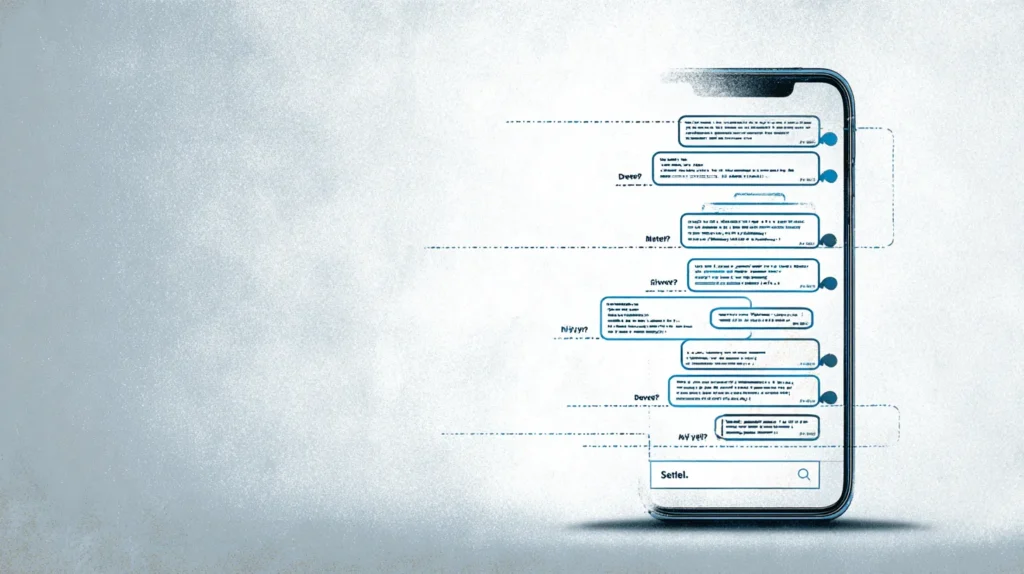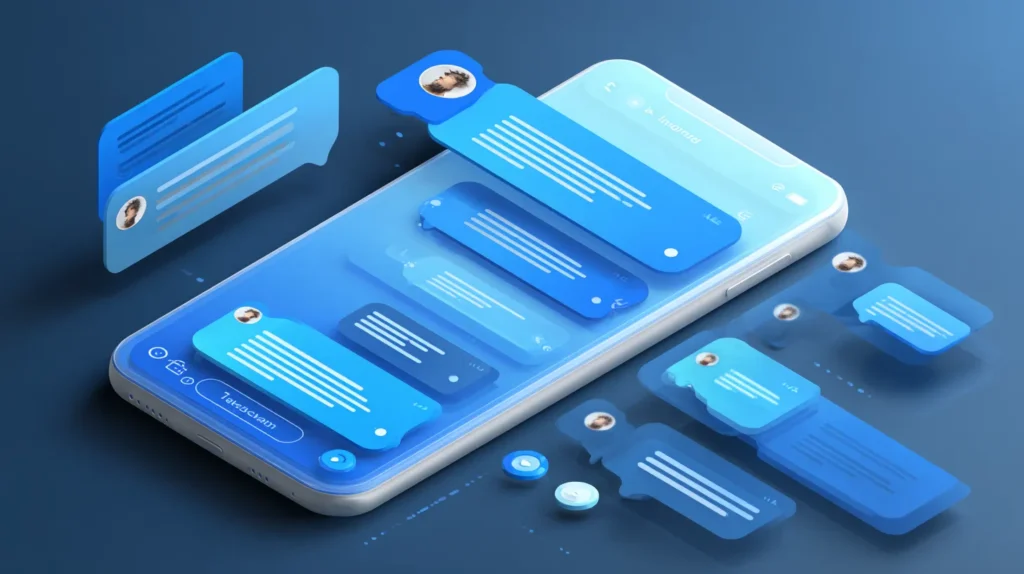Em um ambiente tão dinâmico como o Instagram, mudanças de comportamento podem passar despercebidas — até que você nota que alguém simplesmente desapareceu do seu feed, parou de curtir suas postagens ou não responde mais suas mensagens. Nessas situações, é comum surgir a dúvida: have I been blocked? Embora o aplicativo não notifique diretamente esse tipo de ação, existem sinais claros que podem indicar um bloqueio.
Desconfiado de que alguém te bloqueou no Instagram? Veja como identificar! Se uma pessoa sumiu do seu feed ou deixou de responder, pode ser um sinal de bloqueio. Descubra os sinais mais comuns e aprenda como identificar. 😯👇⬇️
⬆️ The best apps to find out who blocked you on Instagram ⬆️
Have you ever messaged, commented, liked an old photo, and… absolute silence. No response, no notifications. Are you being ignored? And what's more: has someone blocked you on Instagram and you haven't even noticed? Believe me, this situation is more common than it seems—and yes, it can play havoc with our emotions.
Whether ignored or blocked, the feeling is practically the same: that nagging doubt that sets in and won't go away. So, if you feel like you've disappeared from someone's radar, it's time to investigate. And, fortunately, there are apps that help you find out who cut off digital contact with you in a practical and safe way.

In this article, we will show you How to know who blocked you on Instagram in 3 simple steps, using powerful tools like Who Unfollowed Me, InstaFollow and FollowMeter. We'll also compare these apps so you can choose the one that best suits your needs—whether you're trying to prove you're being ignored or simply organize your followers more strategically.
The Digital Dilemma: Ignored or Blocked?
First of all, it's important to understand the difference between being ignored and being blocked. While both can be uncomfortable, the signals are different—and so is the emotional impact. When someone ignores you, your messages are seen but not responded to. Likes and interactions disappear, but you still see their profile. When blocked, the profile simply disappears: you can't find the account, you can't send messages, and comments on old posts disappear.
In both cases, however, the feeling is similar: you feel excluded, cut off, without warning. And so, it's understandable to want answers, especially when the relationship was close or when the change in behavior seems sudden. So, if the question "am I being ignored?" won't leave your mind, move on. We'll show you how to investigate this with respect, intelligence, and, of course, the help of technology.
Step 1: Watch the signs—they say more than meets the eye
To start, pay attention to the most common signs that you're being ignored or blocked. Instagram doesn't always make this clear, so you need to connect the dots. See if the following behaviors apply to you:
- The person's profile has disappeared from your list of followers or followed;
- You can't find her name in the search bar;
- Previous messages have disappeared or are “unavailable”;
- Her likes and comments have disappeared from your feed;
- You send messages and don't even receive delivery confirmation.

If one or more of these signs are present, there's a good chance you've been blocked. However, since some also apply when the person simply deactivates their account or changes their username, it's crucial to proceed to the next step and confirm.
Step 2: Use apps to find out if you've been blocked and ignored
This is where technology comes in handy. With the right apps, you can analyze your profile and receive detailed reports on who blocked, unfollowed, or has simply been ignoring you for days. See below for three of the best options right now:
🔍 Who Unfollowed Me – The Basics That Work
Who Unfollowed Me is a simple and straightforward app. It shows who unfollowed you, who followed you back, and who recently cut ties. While it doesn't directly reveal who blocked you, the clues it provides are enough to raise strong suspicions—especially when someone disappears from the list for no apparent reason.
Benefits:
- Lightweight and easy-to-use interface
- Good for identifying sudden unfollows
- Daily data update
Disadvantages:
- Does not point out blocks directly
- Some features require a premium plan.


📊 InstaFollow – Engagement and Follower Analysis
If you're looking for something more comprehensive, InstaFollow is an excellent option. It shows you not only who unfollowed you, but also who interacts with you the most, who never likes anything, who watches your stories, and who, curiously, never appears again. This allows you to understand whether you're being ignored or if you've actually been blocked.
Benefits:
- Detailed engagement analytics
- Follower history
- Good reading of behavior patterns
Disadvantages:
- Slightly more cluttered interface
- Some features only available in the paid version


📈 FollowMeter – The Disguised Block Detector
Of all the apps, FollowMeter is the most comprehensive when it comes to blocking. The app shows who visited your profile, who blocked you, who frequently ignores you, and even which followers are "ghost" followers. If someone blocked you, FollowMeter clearly displays the change—including graphs and comparisons.
Benefits:
- Identify blockages more accurately
- Shows ghost and inactive followers
- Clean and intuitive visuals
Disadvantages:
- May consume more battery
- Some features require a monthly subscription.


Comparing apps: which one is best?
| App | Best for | Detect blockage? | Ease of use | Free resources |
|---|---|---|---|---|
| Who Unfollowed Me | Quick unfollows | Indirectly | High | Average |
| InstaFollow | Overall engagement analysis | Partially | Average | Low |
| FollowMeter | Direct blockage detection | Yes | High | Average |
Step 3: Take care of your account (and your emotional well-being so you don't get ignored)
Now that you know how to identify if you're being ignored or blocked, the next step is to take care of your account—and, of course, your emotional well-being. After all, as frustrating as it is to discover someone has digitally excluded you, it doesn't define your worth. Sometimes, the block says more about the person who did it than about you.
In practical terms, take the opportunity to review who you follow, enable two-step authentication, and adjust the permissions of apps connected to your account. Use these tools as allies to keep your digital space clean, secure, and transparent.
Additionally, if you find yourself being ignored by more than one person or group, it may be time to reevaluate the type of connection you want to maintain. Instagram should be a place for positive exchanges—not constant discomfort.
A final touch of digital responsibility
It's always good to remember: using apps to analyze your account is valid, as long as it's done responsibly. Spying on other people, hacking accounts, or acting on digital impulses is never the way to go. Respect others' privacy boundaries, just as you expect them to respect yours.
These apps help you better understand your network, your online relationships, and make more informed decisions about who's worth staying connected with.
Conclusion: You don't have to accept being ignored in silence.
Being ignored on Instagram, blocked, or deleted without explanation can hurt, yes. However, with the right tools and the right approach, it's possible to deal with it maturely and strategically. Now you know how to find out who blocked you, which apps to use, and, most importantly, how to move forward with more clarity.
Don't let digital influences dictate your value. Make your network a reflection of who you truly are—someone who deserves genuine connections, without games, without disappearances, and definitely without silent blocks.
When using social media monitoring apps, such as those that help you identify who has blocked or unfriended you, it's important to do so consciously and responsibly. These apps may require access to your personal information, which can pose risks to your privacy and online security. Furthermore, digital interactions are complex, and the reasons someone blocks or unfriends you can be personal. Use these tools to improve your interactions, but always respect the privacy of others and the security of your account.
